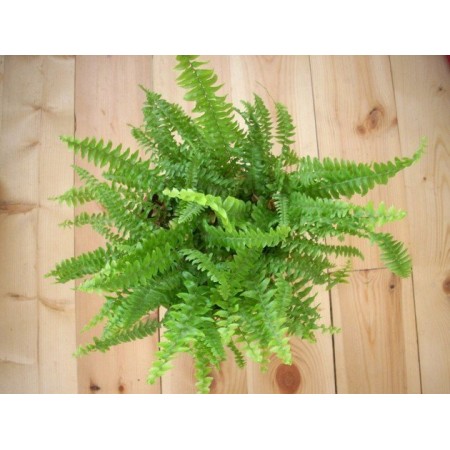Fern cultivation and care

Domestic fern belongs to those plants that remain green all year round: even in winter, even in summer. True, in the warm season he will need additional watering and good air humidity, since the flower does not tolerate a stale arid atmosphere.
The right place and watering the fern
The most suitable place for a pot with a home fern will be where there is no abundant lighting. While other plants, whimsical to sunlight, are placed on window sills, the fern can be installed on a stand in any corner of the room, and this flower will not suffer from such a decision.
If you do not want to prevent the plant from withering, then it will need to provide constant access to fresh air. Without airing the room, the leaves of the plant will begin to fade, which will be the first sign of a problem.
Also, fern leaves will wilt, if you do not provide constant soil moisture. It should be borne in mind that this plant variety is not restored, so it is best not to forget to water it at least once a day. A suitable water for irrigation will be a liquid at room temperature, which is previously recommended to boil. Tap water may contain substances that cause various diseases in the flower.
Optimum temperature and humidity
As mentioned above, the home fern takes root and blooms perfectly in any season. The air temperature in the premises should not be lower than 10 degrees of heat in winter and not higher than 25 degrees of heat in summer and spring.
It is also very important to monitor the level of air humidity, since the native elements of fern are tropical forests, where the air is saturated with liquid all year round. When the heating season begins and central heating is turned on in the apartments, the pot with the plant should be placed away from batteries and radiators, which dry the air and can lead to death of the flower. Additional spraying of leaves from a spray bottle or installation of humidifiers in a room with a fern will help to solve the problem.
Transplantation and reproduction
So that the plant does not stop growth, it must immediately be transplanted into a larger pot when the root system of the flower has reached its limit. It is not recommended to touch the roots themselves, filling the free space in the “new housing” of fern with fresh soil.
At home, for the propagation of ferns, the division method is most often used, since it is very laborious and problematic to grow new flowers from shoots. Separate the "children rosettes" from the "parent-felon" should immediately, as soon as you find new shoots next to the old flower. By the way, the most popular types of home fern are nephrolepis, davallia, asplenium and venereal hair.